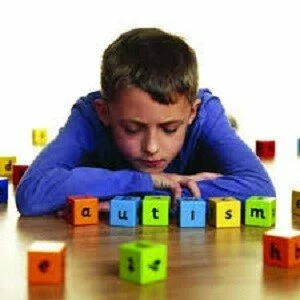April is Autism month, a period in which awareness on autism is created. Autism also called Autistic Spectrum Disorder (ASD) is a poorly understood disease but the prevalence has been on the increase in the last couple of years. This could be due to greater awareness and may be better diagnosis. ASD is preferably used these in the place of autism because the condition covers a wide range of disorders which vary from mild to severe. These disorders are pervasive developmental disorders which affect all aspects of the child’s everyday life.
1.What is Autism?
Autism is a neuro-developmental disorder characterized by social and communication deficits and repetitive behaviours. The child is unable or finds it difficult to communicate in any language, always keeps to himself and plays with himself via repetitive movements.
While the prevalence of Autism is increasing, it’s still not entirely clear exactly how common autism it is. It is said that each time the United States’ Center for Disease Control (CDC) does a monitoring study, the rate of autism goes up — the latest numbers show that 1 in every 68 children born falls on the autism spectrum. However, according to some reports, the number may be significantly lower — studies that use gold standard diagnostic procedures and observe children directly find rates closer to 1 in 150 children in mild cases. The incidence is about 1 to 3 per 1000 in severe cases in the United Kingdom.
2.What causes Autism?
Autism is caused by a genetic abnormality, a child is born with the condition. About a hundred genes have been discovered to have a hand in autism. A handful of risk factors have also been found to be associated with autism, they contribute but do not on their own cause autism. These risk factors include very low birth weight, preterm birth, older parental age, and exposure to some toxins during pregnancy,
3.Who gets Autism?
Autism is global, occurring all over the world and affects all races, ethnic groups, and socioeconomic classes. As stated above, some children are more at risk in the presence of the abnormal genes; these risk factors include very low birth weight, preterm birth, older parental age, and exposure to some toxins during pregnancy. However more boys are affected than girls in the ratio of 4 to1.
4.Does it spread from person to person?
Autism is not a communicable disease, it does not spread from one child to another.
5.What are the symptoms and signs?
There are three main symptoms of autism;
a. Difficulties in communicating in a language with parents and siblings, delayed speech development,
b. Difficulties in developing relationship, child prefers to be on his own, not interested in others, in a world of his own. The early symptoms include things like not responding to name, poor eye contact, and lack of joint attention; joint attention is when the child uses gestures and gaze to share attention in something of interest to them. The child may point to something to show the parent, like a bird in the sky, and will then watch to see that the parent is following the bird, completing a triangle of attention.
c. Difficulties in being involved in pretend and reciprocal plays, involved in repetitive movements such as hand flapping, toe movements etc.
Symptoms unfold over the first year or two of life, but there may be clear signs as early as 12 months. By 2 years old, children can be reliably diagnosed. Parents should look for these warning signs in their child’s first year of life.
6.Can Autism be treated?
Once the diagnosis of Autism is confirmed, treatment combines speech therapy, occupational therapy, physical therapy, and applied behavioral analysis (i.e., ABA) in special institutions. Effective treatment has tremendous gains for the child and the family. Most children with mild cases go on to lead near normal lives.
Awareness about autism and available treatment options have improved tremendously over the past few decades.
7.Can it be prevented?
Autism is not preventable but the consequences can be mitigated.Also would-be parents should guard against the risk factors listed above.





No Comments